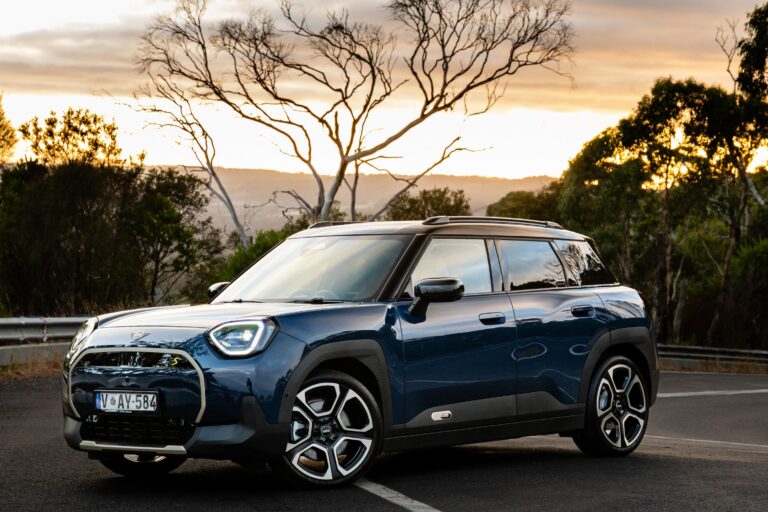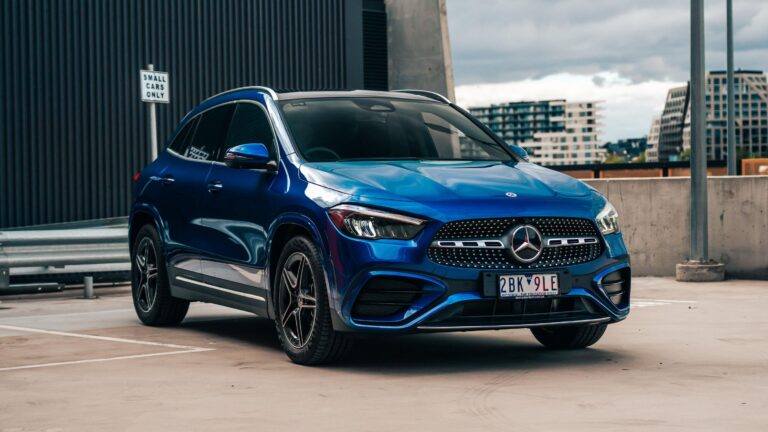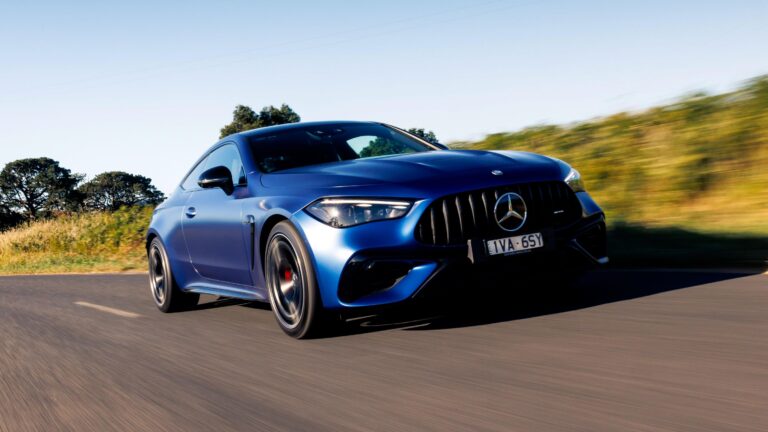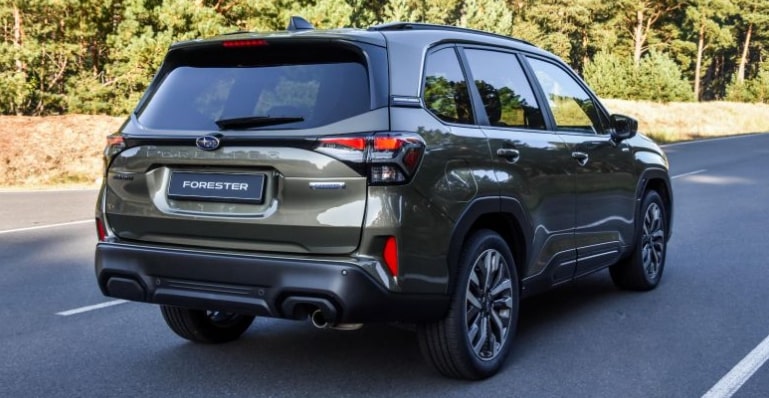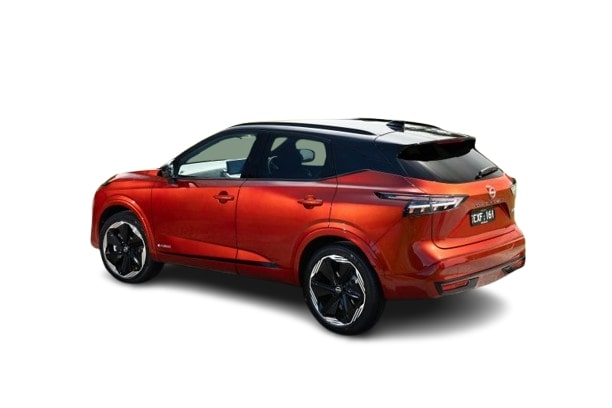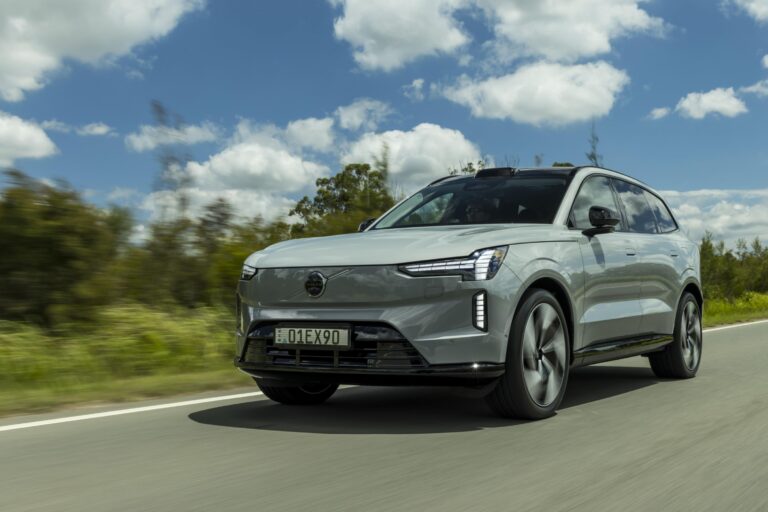2025 Suzuki Vitara: My Personal Honest Review
The Suzuki Vitara Turbo has been very long in the tooth for years now, though its Boosterjet turbo engine is still full of charm.
The fourth-generation Suzuki Vitara has been with us for 10 years now and it doesn’t look like it’s going anywhere anytime soon.
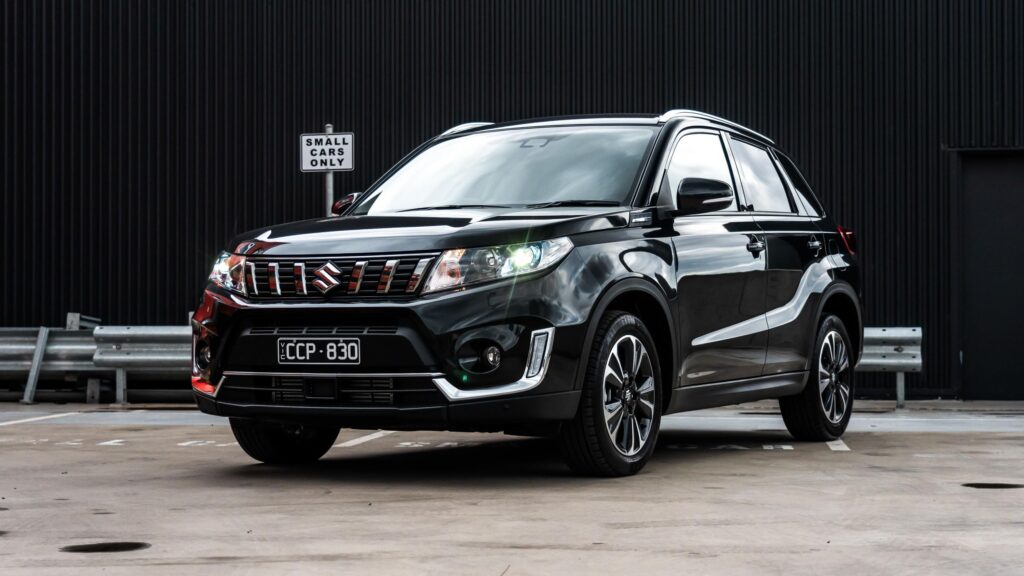
Note: This is an updated review that was published in July 2024. There have been no major changes to pricing or specifications since publication.
It’s worth noting that production of the current Vitara has ended for Australia as it did not meet Australian Design Rule 98/00. A facelifted version of this model will address this issue and will arrive locally in the second quarter of 2025.
Suzuki dealers still have stock of the current Vitara, some of which are from MY23. We’ve updated the original description with the latest information. You can read the original version of this review here.
Watch: Paul’s 2022 Suzuki Vitara Turbo video review
This small SUV is now one of the older models, like the Mitsubishi ASX, although the Suzuki, imported from Hungary, still offers a lot.
The Suzuki Vitara Turbo tested here is fitted with the brand’s Boosterjet engine, which is also offered in models such as the Swift Sport and the larger S-Cross. With 103kW and 220Nm, it provides the 1.2tonne SUV with plenty of power to get it going.
Inside, not much has changed over the course of the current Vitara’s sales, although Suzuki has recently reverted to a factory-fitted Bosch-supplied 7.0-inch touchscreen infotainment system. It previously fitted a larger 9.0-inch unit locally due to a semiconductor shortage.
Another facelifted version of the Vitara has been revealed overseas, and Suzuki Australia has confirmed it will arrive here in the second quarter of 2025. This will mark the local debut of a hybrid powertrain that has been available in other markets for years.
How much does the Suzuki Vitara cost?
On test here is the most affordable Vitara variant with the more powerful Boosterjet turbocharged engine.
| Model | Price before on-roads |
|---|---|
| Suzuki Vitara 5MT | $29,990 ($27,541 drive-away for MY23 stock) |
| Suzuki Vitara 6AT | $31,990 ($29,441 drive-away for MY23 stock) |
| Suzuki Vitara Shadow 6AT | $35,990 |
| Suzuki Vitara Turbo 6AT | $36,490 ($32,391 drive-away for MY23 stock) |
| Suzuki Vitara Turbo AllGrip 6AT | $40,490 ($37,341 drive-away for MY23 stock) |
| Suzuki Vitara Turbo Shadow 6AT | $40,990 |
| Suzuki Vitara Turbo Shadow AllGrip 6AT | $41,490 |
What is the Suzuki Vitara like on the inside?
If you’re expecting drastic changes inside the Vitara’s cabin over a model from a few years ago, think again…
The interior of this 10-year-old small crossover hasn’t undergone any major changes since its local debut in 2015. Some of the minor changes that came with the 2019 facelift included a new coloured instrument cluster display and the removal of the attractive central analogue clock.
Given the current price of the Turbo variant tested here, more technology and higher-quality materials are expected. Chinese competitors offer new and high-tech interior designs at lower prices.
Sure, Suzuki offers the S-Cross, which has a new interior design and some luxurious touches, but it is more expensive than the Vitara. Still, there are no subjective issues with the Vitara’s interior, it is simply what it is – budget-oriented. It now looks and feels old-fashioned among its newer rivals.
Getting into the Vitara is easy as it has a high ride height that is synonymous with crossover SUVs. This is especially helpful for those who suffer from limited mobility and don’t want to climb too far up or down in the car.
The first hint of the Vitara’s budget-oriented finish comes when the doors feel very light when opening and closing. There doesn’t seem to be much padding in the doors, which I’ll discuss in more detail in the driving section.
Stepping inside, the Vitara’s interior design feels pretty standard for a new car for 2024. Almost every surface is made of hard plastic, which doesn’t seem right to me for a small car that costs over $36,000.
To be fair, there are soft textile sections on the door armrests and center armrest, and there’s a small felt-feeling panel on the front doors.
The Vitara Turbo’s driver’s seat is set high, giving you an elevated position. This pairs nicely with the large windows and thin pillars that provide excellent all-round visibility. The seat is comfortable for short journeys, providing ample side bolstering and thigh support that kept me steady.
However, on longer journeys, my upper back felt unsupported, which made my shoulders tense. Due to the minimal reach adjustment for the steering wheel, I felt like I had to lean forward to get a good grip on the wheel.
Speaking of the steering wheel, it’s a typical Suzuki unit that hasn’t changed for the current generation Vitara. Its leather wrapping, like the seat bolsters, doesn’t actually feel like real leather, which is typical for this segment.
All the buttons on the steering wheel are logically arranged, although it still feels like the voice assistant and call buttons mounted on the left side of the steering column are an afterthought.
The instrument cluster in front of the driver feels quite dated in the era of fully digital instrument clusters. However, the analogue dials for your speed and revs are easy to read and understand at a glance.
The 4.2-inch colour instrument cluster display has several informative pages that can be cycled through. These are nice to have, but I wish there was a page to show a digital speedometer that would have complemented the proper physical dial.
Also, when you engage cruise control, its graphic takes up a significant chunk of valuable screen real estate.
Suzuki has fitted the Vitara range with a Bosch-supplied and factory-fitted 7.0-inch touchscreen infotainment system.
I have plenty of experience with this particular infotainment system as it was fitted to my Jimny when I bought it. After a number of issues, including Apple CarPlay connectivity issues, I recently decided to ditch it and install an aftermarket Pioneer unit instead and have been loving it ever since.
Despite my previous experience with my Jimny’s standard infotainment system, our Vitara Turbo tester did not exhibit any infotainment glitches or smartphone mirroring dropouts during our (especially short) time with it.
The system takes a while to boot up when you start the car, but once it does, you can easily navigate from page to page. But keep in mind that there’s not much to the interface – it’s a pretty low-tech implementation.
The Vitara only has Apple CarPlay and Android Auto in wired form. As with the system booting up, the infotainment system is compatible with the respective smartphone.
| Dimensions | Suzuki Vitara Turbo |
|---|---|
| Length | 4175mm |
| Width | 1775mm |
| Height | 1610mm |
| Wheelbase | 2500mm |
| Cargo capacity | 375L (5 seats) 1120L (2 seats) |
What’s under the bonnet?
The Vitara Turbo is equipped with the more powerful 1.4-litre turbocharged four-cylinder ‘Boosterjet’ engine. Our tester is front-wheel drive, though there is an all-wheel drive model available.
| Specifications | Suzuki Vitara Turbo |
|---|---|
| Engine | 1.4L 4cyl turbo-petrol |
| Power | 103kW (5500rpm) |
| Torque | 220Nm (1500-4000rpm) |
| Transmission | 6-speed auto |
| Driven wheels | FWD |
| Weight | 1185kg (kerb) |
| Fuel economy (claimed) | 5.9L/100km |
| Fuel economy (as tested) | 6.1L/100km (125km urban driving) |
| Fuel tank capacity | 47 litres |
| Fuel requirement | 95 RON |
| CO2 emissions | 138g/km |
| Emissions standard | Euro 5 |
| Braked tow capacity | 1650kg |
It’s worth noting on a 80km drive loop including heavy urban, freeway and outer-urban windy roads, I achieved an average of 5.5L/100km, which is pretty great for this kind of car.
How does the Suzuki Vitara drive?
The Boosterjet engine comes to life quietly, even from cold. Its idle noise is crisp, not as annoying as some Mazdas or Subarus.
This small crossover feels quite quick and lively to drive. It pulls away from a standstill with ease and is eager to reach the set speed limit.
The Vitara Turbo is by no means a hot SUV, but the Boosterjet engine makes this small SUV feel a little warmer than you might first think. It’s a great engine, and I can see why it’s also fitted to the S-Cross and Swift Sport.
As standard, there’s a six-speed torque-converter automatic transmission that feels pretty low-tech in 2024. But it gets the job done and there’s no learning curve like the dual-clutch transmissions fitted to the Vitara’s newer rivals.
The six-speed auto likes to keep revs low and change gears quickly to reduce fuel consumption. Fortunately, the 220Nm peak torque is available from just 1500rpm, meaning it can often lean into this reserve, making for a hassle-free driving experience.
Where it does get a little off-putting in some cases is that the transmission stays in high gear for a bit too long, making the car feel heavy. After a second or two, the transmission finally corrects itself and shifts up a gear or two to help you accelerate quickly.
Unfortunately, the Vitara doesn’t have a sporty drive mode that helps raise the revs a little faster. There is a manual mode, but then you have to use the paddle shifters to change gears.
Around town and in the city, the Vitara Turbo feels in its element. It’s very light, which makes it a super fun car to drive in everyday situations. It weighs just 1.2 tonnes, so it’s a light car for the segment.
But the Vitara Turbo’s dynamics are let down by its steering, which doesn’t seem to be properly connected to what’s happening at the wheel. It’s oddly heavy on center and then feels overly supportive when the wheel is turned a little more.
For such a light car, I didn’t expect the suspension to be so firm and snappy on bumps and smooth metropolitan roads. Many road imperfections flow into the cabin, which can get tiresome very quickly.
As I mentioned in the interior section, the Vitara has a lot of glass, which provides plenty of outward visibility. You can easily position every corner of the car, which makes parking easier.
As standard, the Vitara Turbo has front and rear parking sensors, as well as a reversing camera. The latter’s resolution isn’t very good and it makes an annoying single beep every time it’s activated.
When accelerating, the Boosterjet engine doesn’t feel strained at all. The car can happily keep the revs low at highway and freeway speeds. It will only drop a gear if it really needs to.
However, the Vitara’s high level of road and tire noise becomes a big factor at high speeds. Inside the cabin, it sounds very tinny, which is probably a result of the light doors and minimal padding.
Roaring road and tire noise
What do you get?
On test here is the penultimate variant in the current range, the Vitara Turbo.
Suzuki Vitara equipment highlights:
- 17-inch alloy wheels
- Space-saver spare wheel
- Roof rails
- Privacy glass
- Halogen headlights
- Front fog lights
- 4.2-inch instrument cluster display
- 7.0-inch touchscreen infotainment system
- Wired Apple CarPlay and Android Auto
- Four-speaker sound system
- Climate control
- Keyless entry and push-button start
- Leather-wrapped steering wheel
- Fabric upholstery
Vitara Shadow adds:
- 17-inch black alloy wheels
- Black front bumper and grille inserts
- Black roof spoiler
- Black decals
Vitara Turbo adds (over the base model):
- 17-inch polished alloy wheels
- Automatic LED headlights
- Rain-sensing wipers
- Power-folding side mirrors
- 6-speaker sound system
- Leather-accented upholstery
- Autonomous emergency braking
- Blind-spot monitoring
- Rear cross-traffic alert
- Lane-departure warning
- Adaptive cruise control
- Front and rear parking sensors
Is the Suzuki Vitara safe?
As of January 1, 2023, the Suzuki Vitara range is ‘unrated’ by independent vehicle safety authority ANCAP in Australia. Vehicles built before January 1 have a five-star ANCAP safety rating based on 2015 assessment against older criteria.
| Category | Suzuki Vitara |
|---|---|
| Side Impact | 16 out of 16 |
| Pole | 2 out of 2 |
| Whiplash protection | Good |
| Pedestrian protection | Good |
| Total | 35.79 out of 37 |
It’s worth noting that active safety assists were not a requirement to get a five-star rating when the Vitara was originally tested, and the base grade currently does without features like AEB and lane departure warning.
Standard safety features include:
- 7 airbags incl. driver’s knee
- Anti-lock braking system (ABS)
- Brake assist
- Electronic brake distribution (EBD)
- Electronic stability control (ESC)
- Reversing camera
Vitara Turbo adds:
- Autonomous emergency braking (AEB)
- Blind-spot monitoring
- Lane departure warning
- Rear cross-traffic alert
- Adaptive cruise control
- Weaving Alert
How much does the Suzuki Vitara cost to run?
The Suzuki Vitara, like the wider Suzuki range, is covered by a five-year, unlimited-kilometre warranty.
| Servicing and Warranty | Suzuki Vitara Turbo |
|---|---|
| Warranty | 5 years, unlimited kilometres |
| Roadside assistance | Up to 5 years (service activated) |
| Service intervals | 12 months or 10,000 kilometres |
| Capped price servicing | Up to 5 years or 100,000km |
| Total capped price service cost | $1985 |

